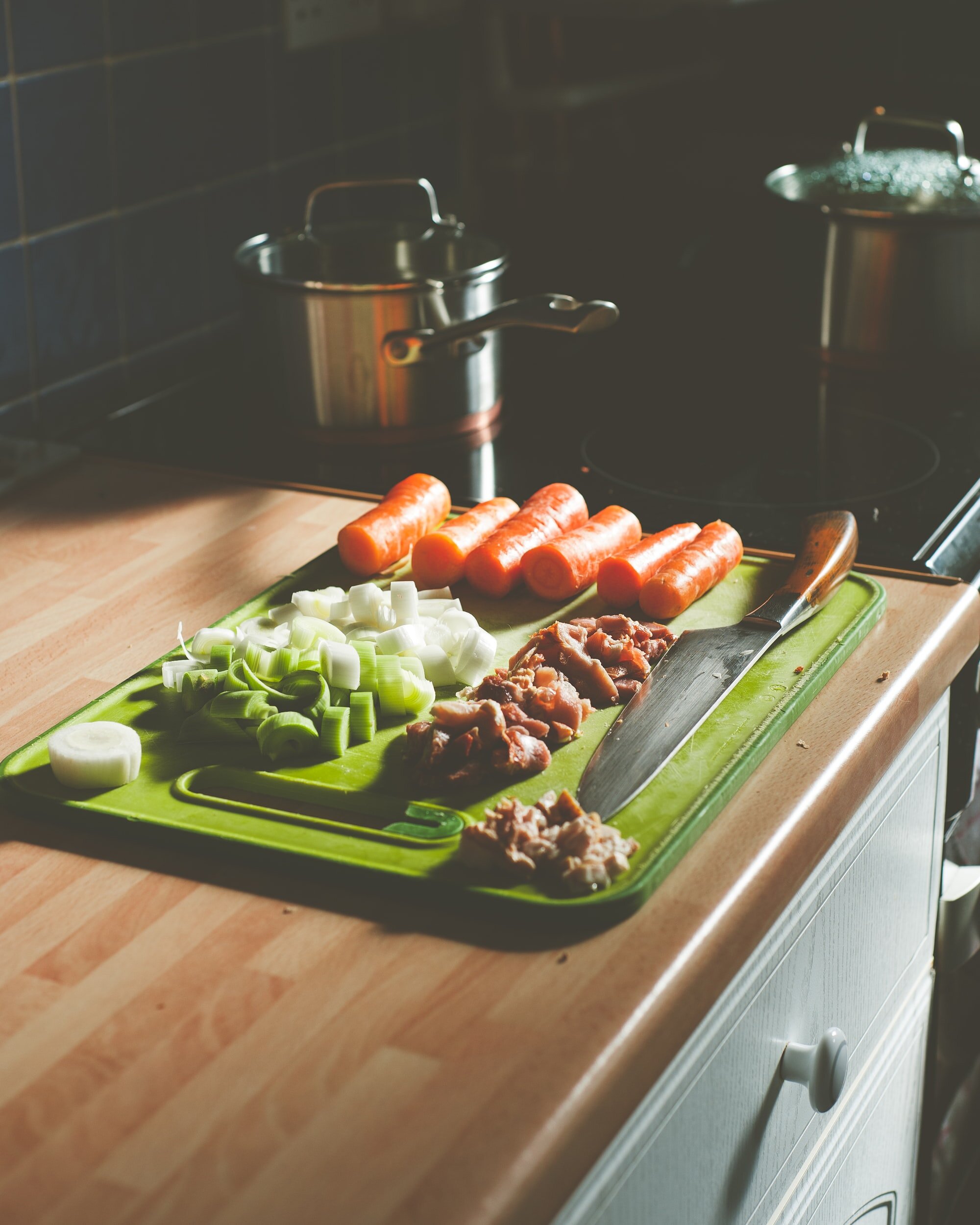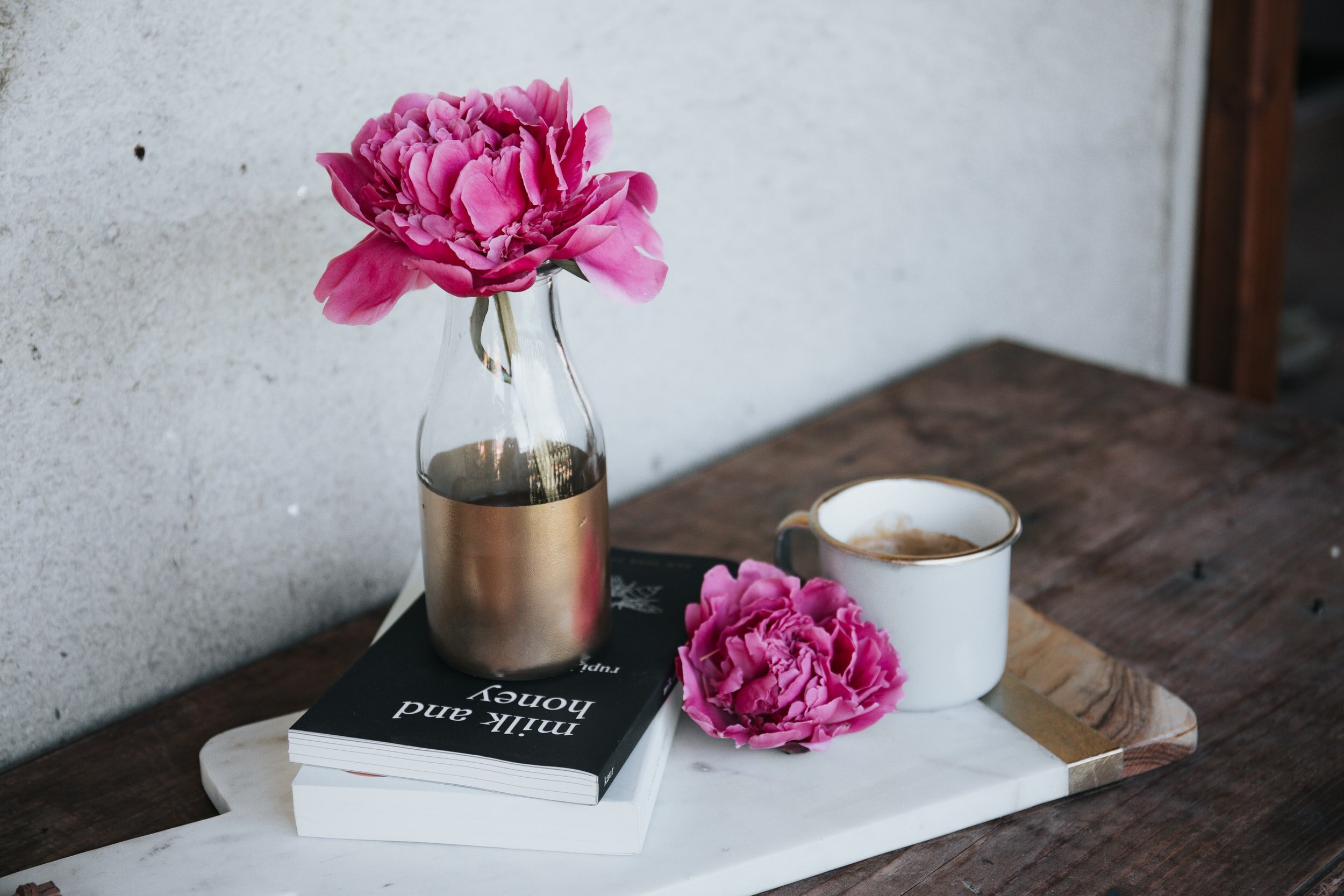The Best Cutting Boards
The images in this blog post are not mine.
cutting board materials – What’s the best?
Ideally, it’s best to have separate chopping boards – one for dealing with meats and one for vegetables. The best chopping board is one that can be easily cleaned and doesn’t damage or dull knives.
Common options for chopping board materials are wood, plastic, rubber, and bamboo.
So let’s lay it down and compare the pros and cons for each down below!
Plastic:
Professional kitchens usually use color-coded plastic or rubber chopping boards.
Plastic cutting boards make it easier to prevent cross-contamination. Since plastic boards are dishwasher friendly, it makes the cleaning and sanitizing process easier and much more manageable.
Cons:
When plastic is cut, it stays cut.
Open areas in plastic allows bacteria to grow and fester.
More prone to retain dirt, stains, and smells.
Harder to clean in the long run.
Thinner and lighter material create an unstable work surface.
It could warp.
Harder on kitchen knives.
Pros:
The two types of plastic most common in the kitchen are high-density polyethylene (HDPE) or Polyvinyl Acetate (PVA) – both tough enough to cut on but still gentle on knives.
They are lighter.
More affordable.
Available in a variety of colors.
Can tolerate most food-safe cleaning solutions.
Endures soaking in water.
Dishwasher-safe.
Rubber:
Cons:
Rubber could melt.
Can’t be used as a serving platter.
Can’t be used underneath a hot serving dish.
Costs the same as a high-quality wooden chopping board.
Pros:
More common in professional kitchens.
Have the same properties as wood.
Heavyweight.
Durable.
Gentle on knives.
Similar self-healing properties as wood.
Low maintenance.
Endures food-safe cleaning products.
Dishwasher-safe.
Bamboo:
Cons:
Not the kindest material to knives.
Occasional maintenance with oil.
Can’t be soaked in water.
Not dishwasher friendly.
Pros:
Bamboo is not wood, it’s actually really hard grass – meaning it’s harder and less porous than most hardwoods.
Highly resistant to scarring.
Resistant to absorbant liquid.
Less likely to harbor bacteria.
A highly renewable resource.
Small chance of warping.
Can serve as a beautiful cheese board or appetizer tray.
Glass or Marble:
Cons:
Absolutely horrible for knives.
Not meant to be a chopping board.
The slick surface can be dangerous and can make your knife slip.
Too heavy.
Pros:
Acts as a great serving tray.
A great cold surface for rolling dough.
Attractive and beautiful.
Wood:
Walnut, cherry, oak, and maple are options for great types of wood for a cutting board.
They fall in the “just right” category of hardness that's perfect for both board and knife maintenance.
Cons:
Can’t remain soaked in water for long periods of time.
Can’t endure very strong cleaning products.
Can be quite expensive.
Occasional maintenance with oil.
Pros:
Studies show they retain less bacteria.
Wood “suck” bacteria into their depths, where they die of dehydration.
Beautiful and organic.
Provides a stable surface – will not slide around.
Preserves a knife’s edge.
Self-healing properties – the grains and fibers tend to close up when scarred.
Natural and renewable resource.
home vs restaurants:
For home usage, I definitely recommend investing in a proper hardwood chopping board. Walnut, cherry, oak, and maple are beautiful materials to look for and invest in, and having a large surface really helps. A minimum size of 24” x 18” (approx. 45.7 x 60.9 cm) is best. Wood isn’t only a durable, natural, and renewable resource, but it also displays beautifully in ones home and can be used as a great serving platter.
Restaurants use plastic or rubber boards, and I would say both materials are best for a professional setting for various reasons – not only does it endure proper kitchen sanitization products, but the variety of colors helps us to color code the kitchen for proper food preparation and hygiene and safety to prevent any potential cross contamination.
From my personal experience, we always used the following:
Red for raw meats and poultry
Yellow for cooked meats and poultry
Blue for raw seafood
Green for washed fruits and vegetables
And white for dairy and baked goods
Uncommon chopping board colors that I personally have not used are brown and purple – where brown is used for unwashed vegetables and purple is used for free-from products, such as gluten-free or dairy-free ingredients.
All in all, at home, having two chopping boards are enough – one for meat and the other for vegetables. Using hot scalding water and soap to sanitize them is enough (seriously, it’s that simple!) to ensure that all our kitchen boards and even kitchen utensils are fully safe and properly sanitized.
But what if I can only invest in one proper cutting board?
That’s also fine! Then we’ll follow the proper way for prepping food, meaning we will be prepping fruits and vegetables first, and raw meats, poultry, and seafood second.
It is also important to adopt a habit of washing our chopping boards immediately after finishing prepping whatever it is we were prepping. This ensures your board will stay clean, safe, and the food won’t have time to infuse into the board.
Both of these habits will ensure safe practices in your kitchen that can help prevent cross-contamination and prevent spreading bacteria that could cause food-borne illnesses.





